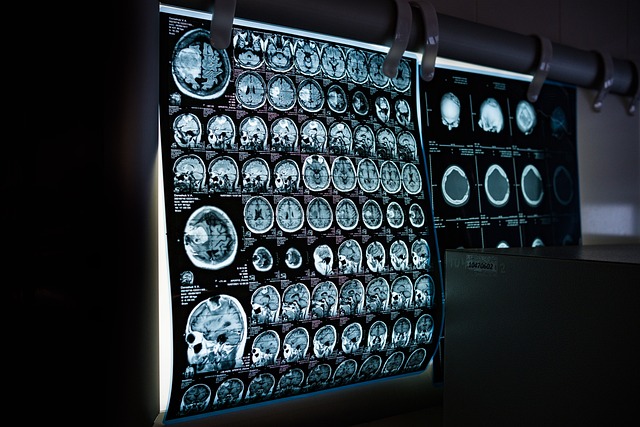Chronic Pain Clinical Research: What Current Studies Are Exploring
Chronic pain affects people across age groups and regions, and scientists are intensifying efforts to understand why it persists and how to manage it more effectively. Current studies span brain and immune biology, digital health tools, and long-term data to clarify who benefits from which treatments and why relief varies from person to person.

Chronic pain, typically defined as pain lasting longer than three months, challenges patients and health systems because it weaves together biological, psychological, and social factors that shift over time. Researchers are moving beyond one-size-fits-all approaches, building evidence that pain is not just a symptom but a condition with distinct mechanisms across individuals. This shift is shaping clinical studies toward mechanism-based treatment, real-world data collection, and patient-centered metrics that go beyond pain intensity alone.
Understanding why chronic pain remains a major research focus
Chronic pain remains a central research focus because it is common, complex, and associated with reduced quality of life. It co-occurs with sleep problems, anxiety, and depression, and can limit mobility and work participation. The condition is also heterogeneous: two people with the same diagnosis may respond very differently to the same therapy. Studies therefore emphasize stratifying patients into subgroups (sometimes called phenotypes) based on symptoms, biology, and behavior to match treatments to patient profiles.
Another driver is the need for safer, more effective management strategies. The limitations of single-modality therapies and concerns around long-term medication use have pushed research toward multimodal approaches—integrating physical rehabilitation, psychological interventions, and targeted pharmacology. Equity is also central: newer studies aim to include diverse populations and settings, ensuring findings reflect different ages, cultures, and access to care. Health economists and public health teams are working alongside clinicians to evaluate how interventions influence daily function, participation, and overall well-being, not only pain scores.
How researchers study the biological and neurological aspects of pain
Current studies investigate pain at multiple levels of the nervous and immune systems. At the periphery, researchers examine nociceptors, ion channels, and inflammatory mediators that amplify signals. Within the spinal cord and brain, they look at central sensitization—changes in neural circuits that heighten pain responses—even after tissues have healed. Neuroimaging methods such as functional MRI, EEG, and MEG help map activity in networks involved in sensation, emotion, and attention, clarifying how pain interacts with mood and cognition.
Biomarker research explores cytokines, chemokines, and neuropeptides, as well as glial cell activity that can sustain inflammation. Genetics and epigenetics studies aim to identify variations linked to pain sensitivity, drug metabolism, and treatment response. Placebo and nocebo research is another active area, probing how expectation and context alter neural processing. Together, these lines of inquiry seek biological signatures that can inform targeted therapies and predict who is likely to benefit from specific interventions.
This article is for informational purposes only and should not be considered medical advice. Please consult a qualified healthcare professional for personalized guidance and treatment.
Emerging technologies used in chronic pain investigations
Digital health tools are expanding what researchers can measure in everyday life. Wearable sensors track sleep, activity, and heart rate variability, offering objective context for symptom fluctuations. Smartphone-based ecological momentary assessment captures mood, stress, and pain ratings multiple times per day, reducing recall bias and revealing patterns that clinic visits might miss. Together, these streams support the development of digital biomarkers—quantifiable signals that reflect pain state or risk.
Machine learning models analyze high-dimensional data to identify subgroups, forecast pain flares, or estimate treatment response probabilities. In parallel, neuromodulation research tests noninvasive brain stimulation methods such as transcranial magnetic stimulation and transcranial direct current stimulation, as well as implantable devices studied in carefully designed trials. Remote monitoring and tele-research platforms enable participation from people who live far from research centers, broadening inclusion while maintaining data quality through standardized protocols.
What clinical study designs can reveal about long-term pain patterns
Randomized controlled trials remain essential for testing safety and efficacy, but newer designs address real-world complexity. Pragmatic trials evaluate interventions in routine care settings, using broad eligibility criteria and outcomes relevant to daily life. Adaptive trials adjust elements such as dose or treatment arm based on interim results, aiming to match participants to more promising options while conserving resources. Crossover trials can be useful when individual variability is high, allowing participants to serve as their own controls.
Prospective cohorts and registries follow people over months or years to understand trajectories—who improves, who relapses, and how comorbidities, sleep, activity, and mental health influence outcomes. N-of-1 trials personalize evidence by testing sequences of treatments within the same individual, aggregating results to learn both at the person and population level. Across designs, patient-reported outcomes, function scales, and measures of participation complement pain intensity, creating a fuller picture of lived experience.
Connecting mechanisms to care
A major theme in current research is linking biological mechanisms to individualized treatment plans. For instance, someone showing signs of central sensitization may benefit from therapies that target neural processing alongside physical rehabilitation, while a person with ongoing peripheral inflammation might respond differently. Studies increasingly combine lab biomarkers, imaging findings, digital measures, and clinical exams to triangulate mechanisms. This integrated approach aims to reduce trial-and-error prescribing, prioritize safety, and improve durability of relief.
From data to actionable insights
Turning complex datasets into practical guidance requires robust methods and transparency. Researchers emphasize reproducibility, open protocols, and standardized outcome sets so findings can be compared across studies. They also address ethical considerations, including privacy in digital monitoring and equitable access to research participation. Patient partners contribute to study design, ensuring that questions, timelines, and outcomes reflect daily priorities such as sleep quality, ability to work or study, and social participation.
In summary, chronic pain research is moving toward mechanism-driven, patient-centered, and data-informed care. By uniting insights from biology, neuroscience, digital health, and long-term observational work, current studies aim to clarify why pain persists in some individuals and how to tailor interventions that improve function and quality of life over time.




